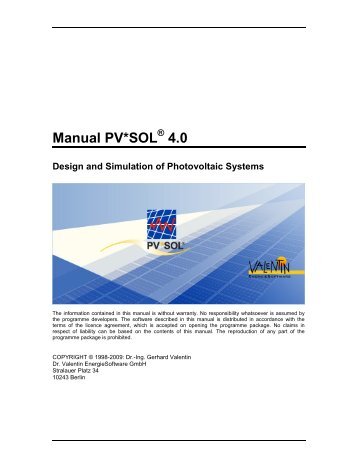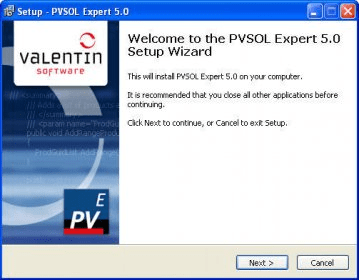Pv Sol Expert 6 Keygen Software
You’ll find a variety of different elements that are easy to apply and edit to suit the needs of your project. (44 Brushes, with Envato Elements Subscription) This set of 44 Illustrator brushes is perfect for any primitive-looking artwork or childlike drawings. Free adobe illustrator hair brushes.
Convert Pvsol Expert 5.0 Serial Number, Key, Crack, Keygen trail version to full software. PV SOL Expert 6.0 serial numbers, cracks and keygens are presented here. No registration is needed. 9a27dcb523 PV Sol 2017 crack Crack, PV Sol 2017 crack Keygen, PV Sol 2017 crack Serial, PV Sol 2017 crack No Cd, PV Sol 2017 crack Free Full Version Direct Download And More Full Version WarezThe best way to contact us is to fill in the form on this page,. PV*SOL Software. PV*SOL premium 2018. T*SOL Software.
A real-world representation of the shading from surrounding objects is extremely important for precisely calculating yields. You’re therefore looking for a program which takes shading into account as analytically as possible? PV*SOL® premium does just that! You can visualize all roof-integrated or mounted systems - even on the ground - with up to 7.500 mounted modules or up to 10.000 roof-parallel modules in 3D and calculate shading on the basis of 3D objects. The user-friendly 3D menu navigation is divided into the six sections of terrain view, object view, module coverage, module mounting, module configuration and cable plan. Simply select possible shading objects and position them on the terrain or the building.
Cannot extract files windows 10. PV*SOL® premium then calculates how often on average the modules are shaded by the objects and displays the result in graphical form. Your benefit: the visualization in 3D mode provides you with detailed information on shadows cast at various times of the day and year, and consequently on likely reductions in yield.
Through the detailed analysis of the shading of individual modules, the effect of power optimization on the system yield can also be precisely visualized in PV*SOL® premium. Electric vehicles can now be divided into several groups. For each group the user can determine the vehicle type, number and expected kilometers.
The timings at the charging station can be set individually for each group on 7 days of the week. As previously, the user can select their electric car from the database. They then enter their daily mileage, and PV*SOL® premium calculates how much PV energy can be used to charge the car. The software also calculates the cost per 100 kilometers, with and without the use of photovoltaics.

For the input of object data, 3D models in different file formats can now be imported into the software via a new interface. This makes it possible to import realistic and detailed 3D objects created with photos taken from different perspectives (e.g. Using a drone). This will add another important tool to the already existing possibility of importing floor plans, cadastral maps and screenshots from web-based satellite maps (e.g. Google Earth) directly into the 3D visualization and thus integrating them to scale into a project.
Flexibility has been significantly increased with regard to the configuration of the modules, which are automatically placed on an object. The new possibility of polystring configuration allows completely different strings to be connected parallel or in series to an MPP tracker. This is required, for example, to connect an east-west roof parallel to one MPP tracker. Even different modules in a string can now be interconnected, e.g.
Defective modules that are no longer available which need to be replaced by similar new ones. Modules with different orientations can now also be connected in one string via the integration of power optimizers (e.g. SolarEdge, Tigo). These new functionalities increase the flexibility of the design process enormously and allow even more detailed configuration and simulation of the PV system. PV*SOL® premium leads you in a few easy steps to your target.
First, you select one or more PV array buildings from a collection of common building types and sizes as required. Dormers, bay windows, walls, saw tooth roofs, and projecting roofs can also be covered with PV modules.
It is possible to model the available roof area with millimeter precision by entering measurements for the roof overhang and restricted areas. You then simply enter the objects that could cause shade – buildings, trees walls, masts, etc. – and size them.
